None of the four variegated English hollies (Ilex aquifolium ‘Argentea Marginata’, below) in the garden has any berries at all. They never have. No doubt, this is a result of not having a male pollinator handy at the appropriate time, so I must be satisfied only by the handsome foliage. It seems a small investment in an appropriate male holly would be well worthwhile to correct this oversight, to encourage the marvelous contrast of glossy red berries beside the variegated foliage.
In the first year after planting, the yellow berried ‘Golden Girl’ holly (Ilex x meserveae ‘Mesgolg’, below) has had a difficult go of it, and it sported only scattered berries early in the autumn. I expect that it will grow with more vigor in its second year, and there will be more abundant berries with its improved health.
The other hollies in the garden have berries to varying degrees, with the branches of many cloaked by clusters of red berries. Berries on a tall, native American holly (Ilex opaca, below) are sparse. I don’t figure that this results from the lack of a nearby pollinator because there are numerous hollies in the surrounding forest, but perhaps this is typical of the native hollies.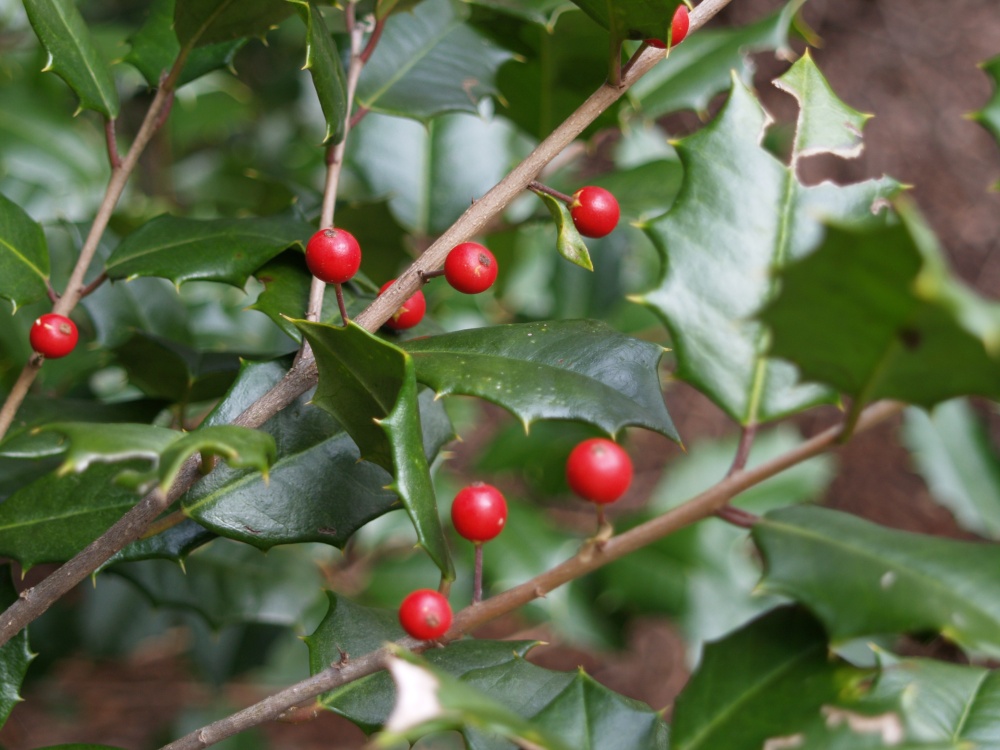
Along the driveway a grove of bamboo and two large trees were removed last year, so with more sun the Winterberry hollies (Ilex verticillata ‘Sparkleberry’ below) have fruited heavier this year. When the grouping of hollies was first planted I included a male, but soon the shade from neighboring hornbeams and a wide spreading magnolia, and the spread of the bamboo killed off two of the five shrubs. Without the male pollinator, and in deep shade, the hollies had few berries, and even now the crop is not as heavy as when a pollinator was nearby.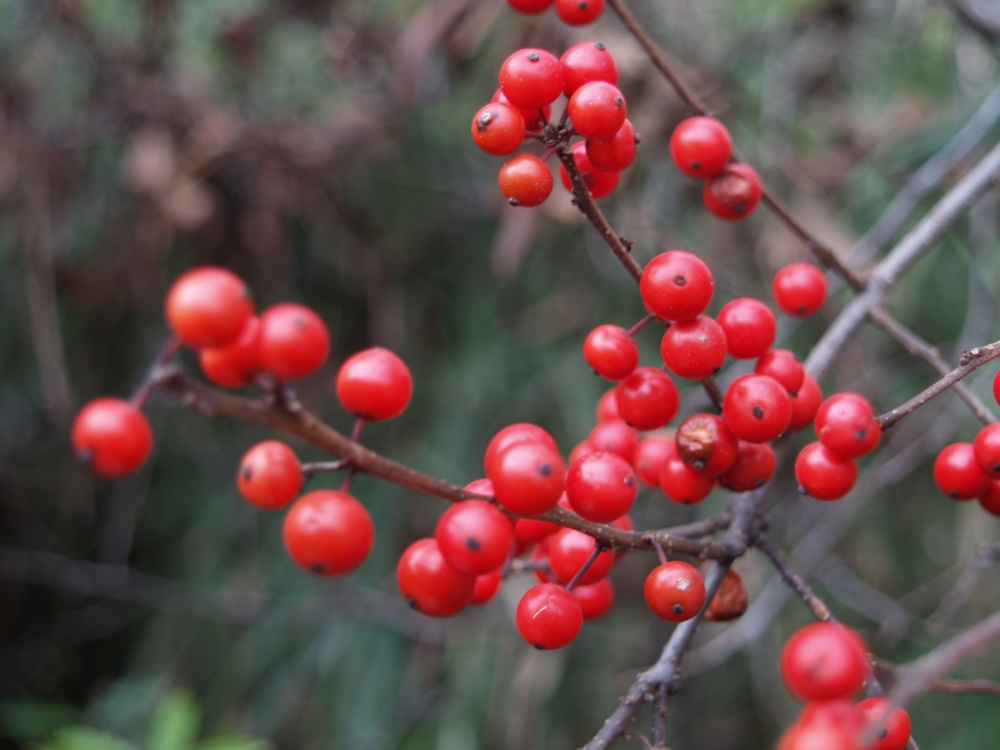
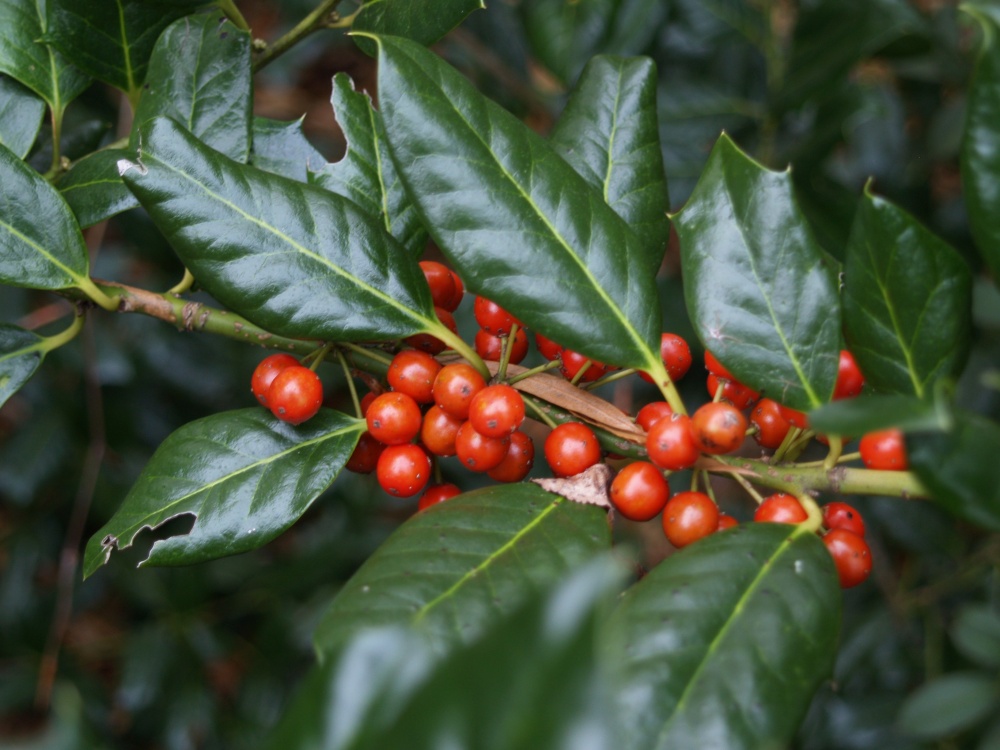 The berries on the aged ‘Nellie Stevens’ holly (Ilex x ‘Nellie R. Stevens’, above) are more sparse than in some years, but still there are plentiful clusters of red berries. The timing of flowering and pollination are too dependent on weather to expect a consistent crop from one year to the next, though the branches of ‘Mary Nell’ (Ilex ‘Mary Nell’, below) and ‘Koehneana’ hollies (Ilex x koehneana) are seldom not covered in berries.
The berries on the aged ‘Nellie Stevens’ holly (Ilex x ‘Nellie R. Stevens’, above) are more sparse than in some years, but still there are plentiful clusters of red berries. The timing of flowering and pollination are too dependent on weather to expect a consistent crop from one year to the next, though the branches of ‘Mary Nell’ (Ilex ‘Mary Nell’, below) and ‘Koehneana’ hollies (Ilex x koehneana) are seldom not covered in berries.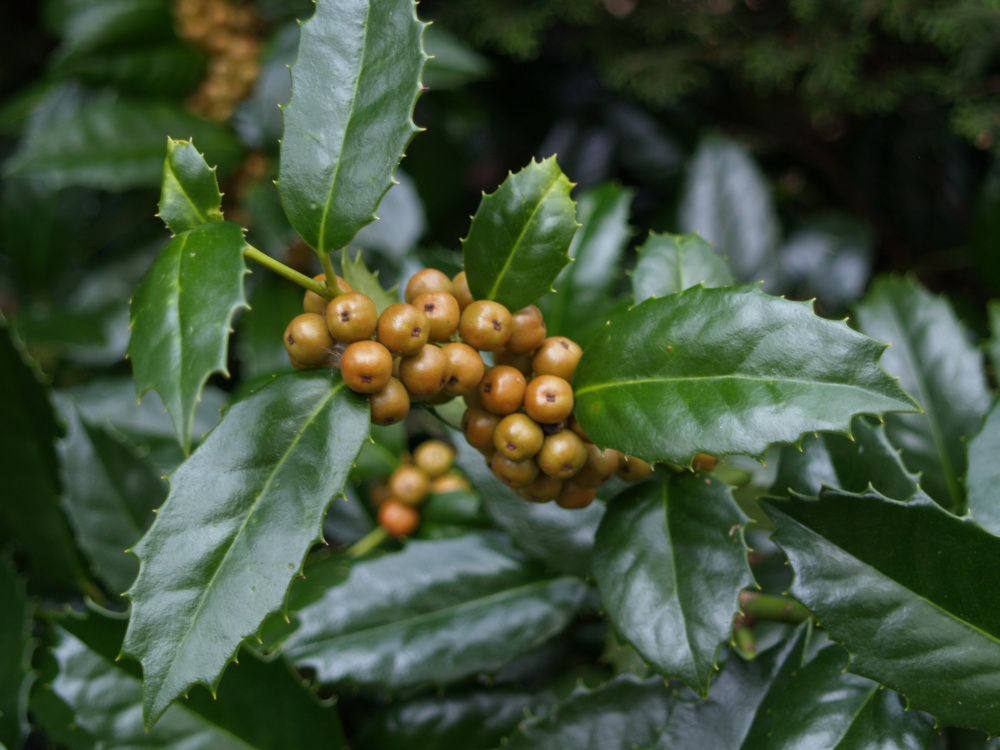
‘Koehneana’ holly (below) bears the heaviest crop of red berries, and along with dark green foliage it seems that this splendid holly should be more popular in gardens. In my garden it grows near the entrance to the driveway so that visitors are greeted by this contrast of red and green through the winter months.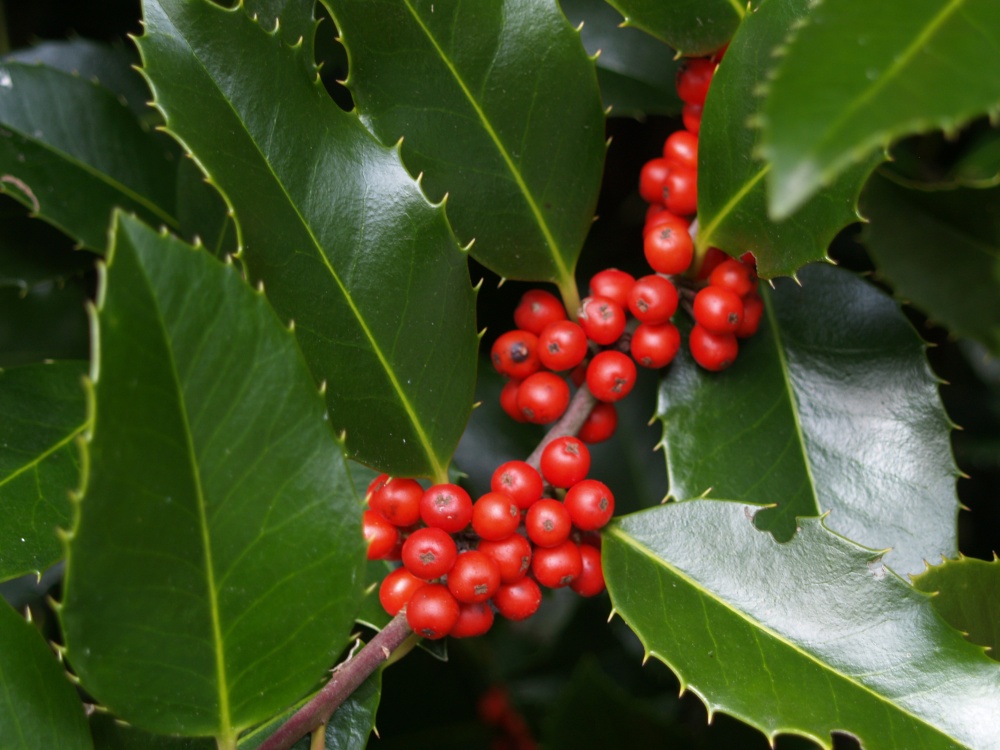
Bordering the stone paths that meander through the rear garden are tall growing nandinas (Nandina domestica, below), with branches weighed down by heavy clusters of berries. While the hollies’ berries will slowly be consumed by birds through the winter, the nandinas’ will persist until they turn brown and drop in the spring. Though birds seem uninterested in the red berries, they are quite lovely and this helps to prevent the spread of the nandinas past the boundaries of the garden.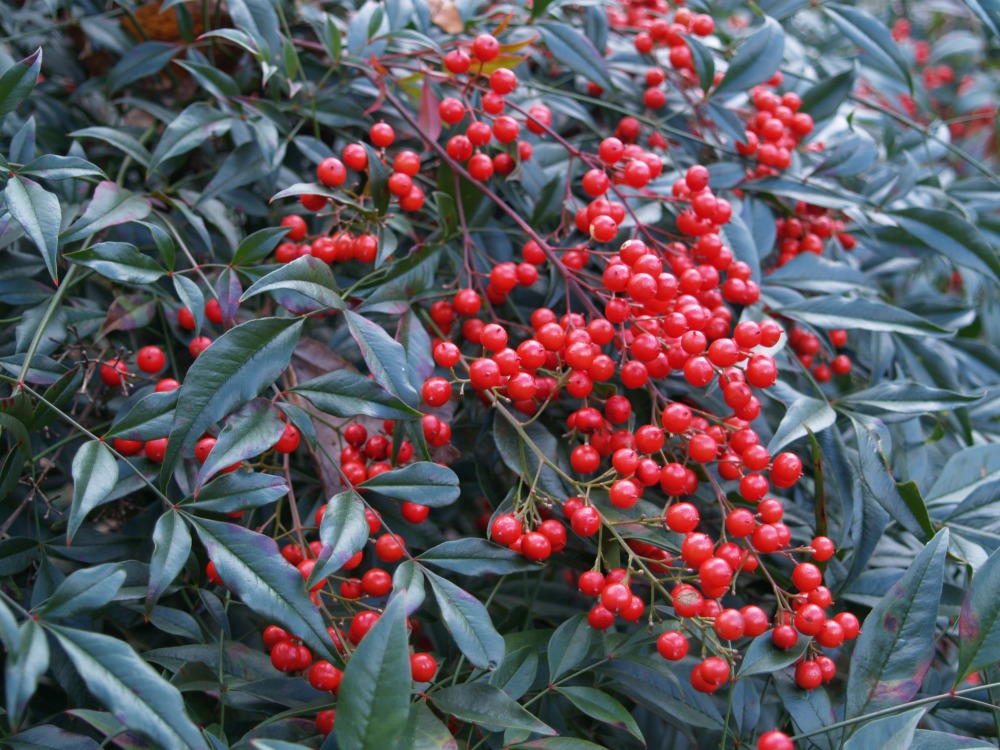
Love hollies!
I have a long standing love of hollies from when I first got into the landscape business. I’ve planted a dozen or so large hollies in my garden, and I’d be happy to plant more if there was space.
We’ve transplanted dozens of nandinas (the tall variety) from Georgia to N. Virginia, and they seem to thrive. Over the years, none have died, and that’s after lots of abuse. Regarding the birds and nandina berries, if I did want to spread the nandinas, would it be useful for me to capture those brown berries that fall in the spring, and help them find a nice space to germinate? (Surprisingly, I was able to do that with some helicopter seeds from my Japanese maple.)
I estimate there are a minimum of 2,000 Japanese maple seedlings in my garden each year from the 25 Japanese maples, so these germinate readily. There are many fewer nandina seedlings, but these are also reputed to germinate easily. Seeds from different plants require varying amounts of time, and some must be treated for higher germination rates, so it’s difficult to judge the timing of when you’ll get plants from seed you sow.
If there are small nandinas growing from the base of your clump of nandinas, these plants from root suckers, or seedlings can be easily transplanted, so the process will be quicker and more dependable than sowing seeds.